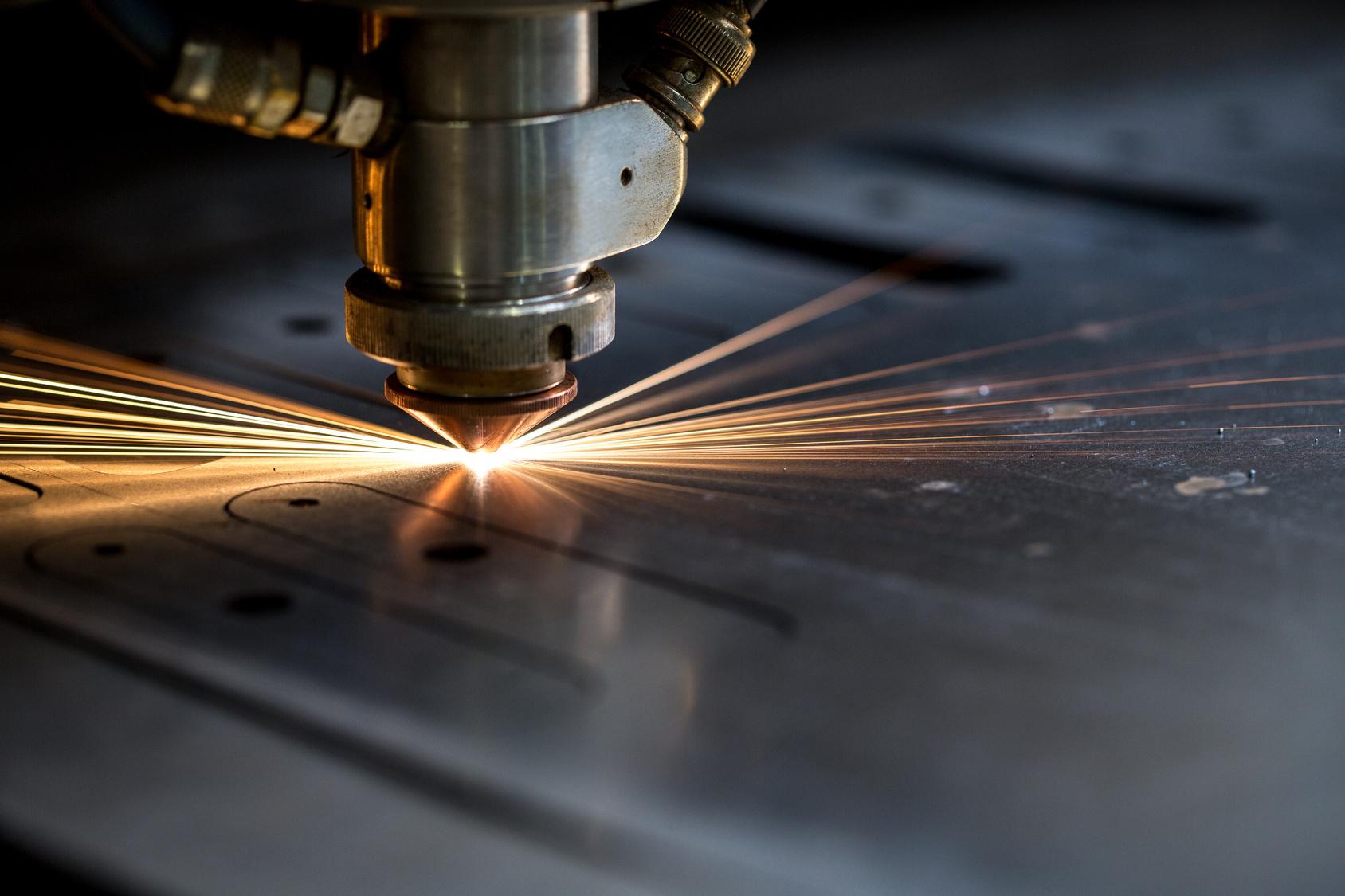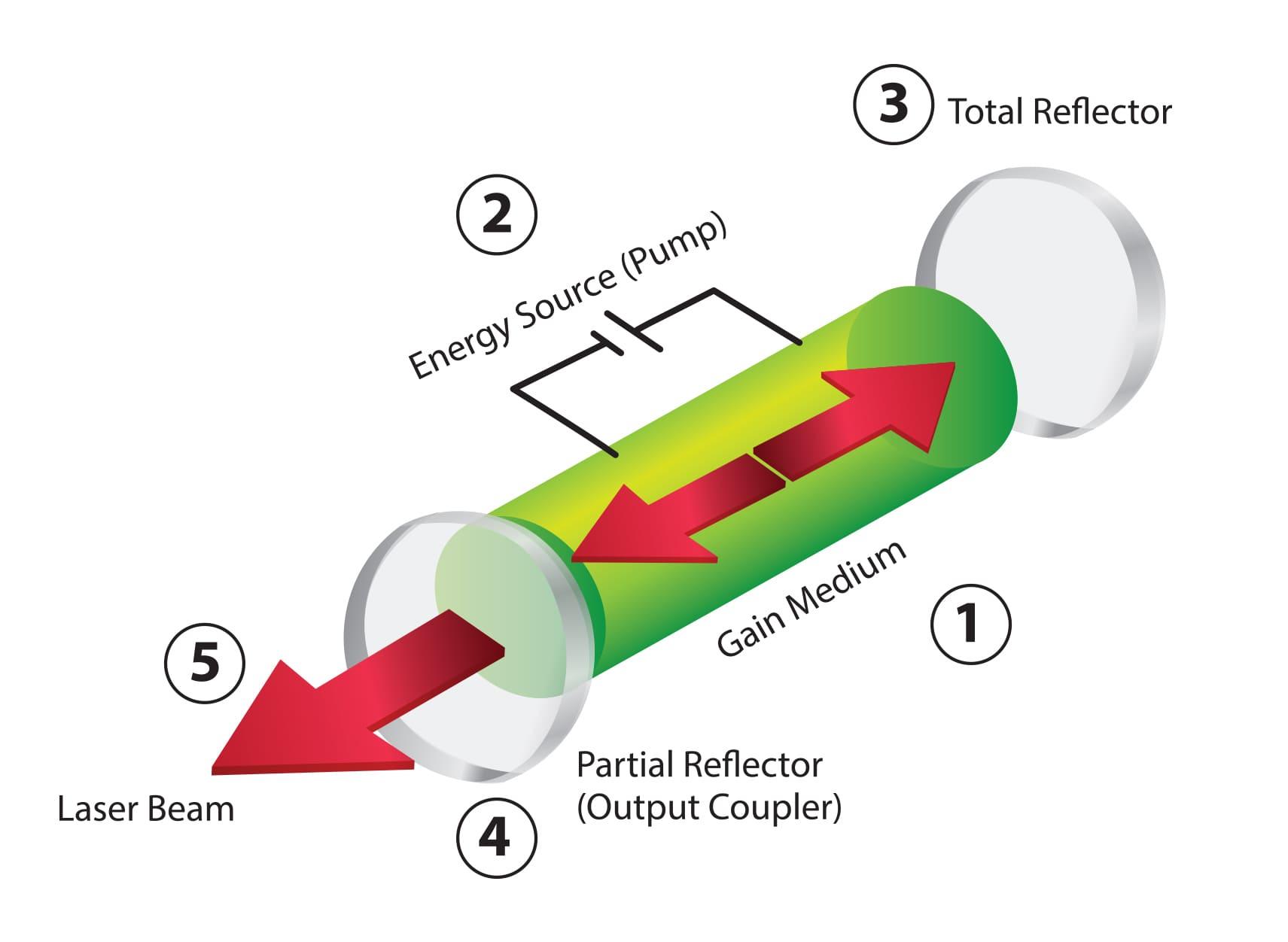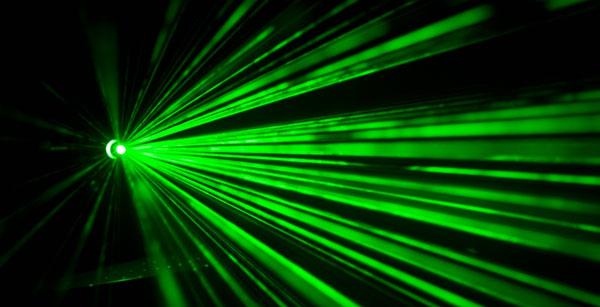Imagine a beam of light so precise it can cut through steel yet so gentle it can perform delicate eye surgery. Now, picture this same beam traveling across galaxies, guiding our self-driving cars, and even revolutionizing entertainment with breathtaking light shows. Welcome to the fascinating world of lasers—an invention that once seemed like pure science fiction, but now illuminates countless facets of our everyday lives. In “Beaming Brilliance: How Lasers Transform Our World,” we’ll journey through the shimmering corridors of this versatile technology, uncovering the marvels it achieves and the magic it brings to the modern age. So grab your metaphorical laser goggles and prepare to be dazzled; the future is here, and it’s brilliantly lit by lasers!
Table of Contents
- Unlocking the Mysteries: The Science Behind Laser Technology
- Lighting the Way: Everyday Applications of Lasers
- Shining Stars: Breakthroughs in Medical Treatments Using Lasers
- Laser Precision: Innovations in Manufacturing and Industry
- Bright Ideas: Future Trends and Coming Advancements in Laser Technology
- Q&A
- The Conclusion

Unlocking the Mysteries: The Science Behind Laser Technology
Imagine a beam of light so precise, it can etch a poem on a grain of rice or cut through steel like butter. This isn’t science fiction; this is the wonder of laser technology. Lasers are at the forefront of numerous scientific and industrial advancements, constantly transforming our understanding of what’s possible.
Lasers work based on the principle of “light amplification by stimulated emission of radiation”. This process begins with energizing the atoms in a medium through an external energy source, causing them to release photons. These photons then stimulate other atoms to emit photons, creating a cascade of light particles that form a coherent beam. The medium can be a gas, liquid, or solid, each influencing the properties and applications of the laser.
Our daily lives are intertwined with laser technology in ways we often overlook. Whether it’s the barcode scanner at the grocery store, the DVD player that entertains your family, or the fiber-optic cables delivering high-speed internet to your home, lasers are the unseen heroes. Here are a few incredible applications:
- Medical: Precision surgeries and eye treatments
- Manufacturing: Cutting, welding, and engraving materials
- Communication: Enabling fast data transmission through fiber optics
Beyond these everyday uses, lasers play crucial roles in scientific research. In astronomy, they’re used to measure distances between celestial objects. In biology, they assist in sequencing DNA. The following table showcases diverse laser applications:
| Field | Application |
|---|---|
| Healthcare | Non-invasive surgeries |
| Entertainment | Laser light shows |
| Security | Precision sensor technology |
Lighting the Way: Everyday Applications of Lasers
Every time we flick on the TV, open up our laptops, or even checkout at the grocery store, we are relying on the subtle yet powerful influence of lasers. These high-intensity light beams transcend their often sci-fi portrayal, seamlessly integrating into our daily routines in ways that frequently go unnoticed.
In medicine, for instance, lasers are nothing short of lifesaving tools. Surgeons use them for precision cuts in delicate operations such as eye surgery (LASIK) and tumor removal, minimizing damage to surrounding tissues. Dental care, too, benefits from laser technology, enhancing procedures for gum disease treatment and cavity repairs. Imagine a dental visit that’s less about the drill and more about gentle, painless light.
Beyond health, lasers surge to the forefront in communication technologies. Fiber-optic cables—made possible by lasers—are the backbone of our internet, carrying data across vast distances with incredible speed and reliability. Whether you’re streaming your favorite show on Netflix or joining a video call for work, it’s lasers that keep your digital life buzzing.
<table class="wp-block-table">
<thead>
<tr>
<th>Communication Use</th>
<th>Laser Advantage</th>
</tr>
</thead>
<tbody>
<tr>
<td>Internet</td>
<td>High-Speed Data Transfer</td>
</tr>
<tr>
<td>Telecommunications</td>
<td>Reliable Signal Over Long Distances</td>
</tr>
</tbody>
</table>
Laser applications extend to our daily entertainment and safety sectors as well. Blu-Ray players use lasers to read data from disks, giving us high-definition viewing experiences. Meanwhile, barcode scanners, omnipresent in retail, ensure swift and accurate transactions at checkout counters. Even safety devices like smoke detectors utilize laser technology to monitor and promptly alert you of any hazards.

Shining Stars: Breakthroughs in Medical Treatments Using Lasers
In recent years, the medical field has seen unparalleled advancements thanks to the innovative application of laser technology. One of the most notable areas where lasers have made a significant impact is in cancer treatment. Traditional cancer treatments, such as chemotherapy and radiation, while effective, have numerous side effects. Laser therapy, on the other hand, offers a targeted attack on cancer cells, significantly reducing damage to surrounding healthy tissues.
Take, for example, photodynamic therapy (PDT), which utilizes laser light in combination with a photosensitive drug to destroy cancer cells. This method not only shows promise in treating various types of cancers but also in reducing the likelihood of recurrence. The advantages include:
- Minimally invasive procedures
- Reduced recovery time
- Targeted treatment minimizes harm to healthy cells
- Lower risk of side effects compared to conventional treatments
Lasers also shine brilliantly in the realm of ophthalmology. Conditions such as glaucoma, diabetic retinopathy, and age-related macular degeneration, once considered challenging to treat, now have more effective solutions. Advanced laser surgeries like LASIK and SMILE offer precise vision correction with quick recovery times, making them popular choices among patients looking to eliminate their dependency on glasses or contact lenses.
Not to be overlooked are the breakthroughs in cosmetic and dermatological treatments. Lasers are now used for a myriad of purposes, from tattoo removal to skin resurfacing. The precision of laser treatments ensures that skin imperfections can be targeted without causing extensive damage to the surrounding tissue. Below is a table showcasing some popular laser treatments and their key benefits:
| Treatment | Benefit | Procedure Time |
|---|---|---|
| Laser Hair Removal | Long-term hair reduction | 30-60 minutes |
| Fractional Laser Resurfacing | Improves skin tone and texture | 30-45 minutes |
| Tattoo Removal | Effective removal of various ink colors | 10-30 minutes |
The transformation lasers have brought to medical treatments extends beyond just effectiveness; they have revolutionized the patient experience, emphasizing comfort, precision, and rapid recovery.

Laser Precision: Innovations in Manufacturing and Industry
In the ever-evolving landscape of manufacturing and industry, the precision offered by laser technology is nothing short of miraculous. Lasers are employed for cutting, engraving, welding, and even 3D printing, ensuring unmatched accuracy and efficiency in production processes. These high-power beams of light enable manufacturers to work with a variety of materials from metals and ceramics to polymers and composites, enhancing their ability to create intricate designs and components.
Key Advantages of laser technology include:
- Non-contact processing: Minimizes wear and tear on tools
- High precision and repeatability: Ensures consistent outcomes
- Versatility: Applicable in different materials and industries
- Environmental benefits: Typically reduces waste compared to traditional methods
| Application | Laser Type | Benefits |
|---|---|---|
| Cutting | CO2 Laser | Precise and fast cutting of materials |
| Welding | Fiber Laser | Strong, clean welds |
| Engraving | Diode Laser | High-detail engraving |
| 3D Printing | Selective Laser Melting | Complex 3D structures |
One of the most groundbreaking uses of lasers is in the field of 3D printing, or additive manufacturing. Here, lasers selectively melt powdered materials layer by layer, building complex geometries that would be nearly impossible to create with traditional subtractive methods. This not only allows for the development of highly detailed prototypes but also speeds up the process of bringing new innovations to market, making it a game-changer for industries.
The future holds even more exciting possibilities as researchers explore nanotechnology and biotech applications of lasers. Imagine a world where medical devices can be crafted with atomic-level precision or muscles and organs are 3D-printed directly in hospitals. As lasers continue to carve out their role in diverse applications, they’re not just illuminating paths but creating a smarter, more efficient world.

Bright Ideas: Future Trends and Coming Advancements in Laser Technology
Imagine a world where laser technology is seamlessly integrated into various aspects of our everyday lives. Future trends suggest that medical lasers will not only be used in surgeries but also in non-invasive treatments and diagnostic tools. These advancements will make medical procedures faster, safer, and more precise. Additionally, the development of portable laser devices will make high-tech medical care more accessible, even in remote areas.
Our communication systems are on the brink of transformation, thanks to quantum laser technology. By leveraging the principles of quantum mechanics, lasers can now be used to transmit information with unprecedented security and speed. Expect to see ultra-secure communication networks becoming a reality, minimizing risks of data breaches. Moreover, Li-Fi technology—using laser light to deliver wireless internet—will provide an alternative to traditional Wi-Fi, offering faster speeds with greater efficiency.
In the realm of manufacturing and industry, lasers are proving to be invaluable tools. 3D laser printing is set to revolutionize production processes by enabling the creation of complex products layer-by-layer with outstanding accuracy. This technology will greatly benefit industries such as aerospace, automotive, and healthcare. Even more impressive, laser-based sculpting could redefine the limits of human creativity by allowing artists to carve intricate designs with unprecedented detail and finesse.
As environmental concerns continue to grow, lasers offer promising solutions. They’re being developed to harness clean solar energy more efficiently through laser-ablation technology. Additionally, research into laser-induced nuclear fusion holds the tantalizing possibility of creating almost limitless, clean energy. In agriculture, laser weeding systems offer a chemical-free method of managing crops. These systems use precise lasers to target weeds without harming the surrounding plants, reducing the need for harmful pesticides.
| Trend | Field | Advancement |
|---|---|---|
| Medical Lasers | Healthcare | Non-invasive treatments |
| Quantum Lasers | Communication | Ultra-secure networks |
| 3D Laser Printing | Manufacturing | High-precision production |
| Laser Weeding | Agriculture | Chemical-free weed control |
Q&A
### Q&A: Illuminating Insights from “Beaming Brilliance: How Lasers Transform Our World”
Q1: What exactly are lasers, and how do they differ from ordinary light sources?
A1: Great question! Lasers, which stand for “Light Amplification by Stimulated Emission of Radiation,” are basically superheroes in the world of light. Unlike ordinary light that scatters in all directions, laser light is incredibly focused and coherent, meaning the light waves all march in a precise formation, making it super powerful and precise.
Q2: Why are lasers considered transformative in modern technology?
A2: Oh, where to start? Lasers are the unsung heroes behind so many of our tech innovations. From enabling fiber-optic communications, which power the internet, to precision surgeries that feel like a scene from a sci-fi movie, lasers have revolutionized fields like medicine, telecommunications, and even entertainment (hello, laser light shows!).
Q3: Can you share some specific examples of how lasers are used in medicine?
A3: Absolutely! In the medical world, lasers are like magic wands. Lasik eye surgery uses lasers to reshape corneas and improve vision. There are also laser treatments for skin conditions, where they help remove warts, moles, and even tattoos—quite the beauty makeover! Plus, in more serious applications, lasers can target and destroy tumors with pinpoint accuracy, minimizing damage to surrounding healthy tissues.
Q4: How do lasers contribute to scientific research?
A4: Lasers are the Swiss Army knives of science labs! They’re used to study everything from the smallest particles in physics to the vastness of space. Techniques like spectroscopy use lasers to identify materials by analyzing the light they emit or absorb. And let’s not forget that the LIGO observatory, which detected gravitational waves, used incredibly sensitive laser interferometers to make that groundbreaking discovery.
Q5: What’s the role of lasers in manufacturing and industry?
A5: Lasers have truly transformed manufacturing, making it smarter, faster, and more precise. Laser cutting and engraving allow for incredibly detailed designs on materials ranging from metal to fabric. In automotive and aerospace industries, lasers are used for welding parts together with unparalleled accuracy. It’s safe to say lasers are the artisans of the manufacturing world.
Q6: Are lasers really as useful in everyday life as they seem in science fiction?
A6: It may not be quite like Star Wars just yet, but lasers are indeed hard at work in our daily lives. Barcode scanners in supermarkets, laser printers in offices, and even the optical drives that read your DVDs all rely on laser technology. While we might not have laser blasters, the impact of lasers on our daily convenience is nothing short of futuristic.
Q7: What’s next for laser technology?
A7: The future sure looks bright! Continued advancements are leading towards even more potent and diverse applications. Quantum computing, which promises to revolutionize computing power, relies heavily on laser technology for qubits manipulation. We’re also seeing the development of lasers for wireless power transmission and even potential laser-based spacecraft propulsion systems. It’s as if the sky’s the limit for what lasers can achieve next.
Q8: How can someone get involved in the field of laser technology?
A8: If you’re fascinated by lasers (and who wouldn’t be?), there are many paths to dive in. Start with a solid education in physics, engineering, or a related science field. Many universities offer specialized programs in photonics and laser technology. Internships and hands-on projects can also provide invaluable experience. The field is always evolving, so being curious and staying updated with the latest advancements will definitely set you on a bright path!
Q9: Any fun facts about lasers to share?
A9: Definitely! Did you know the very first laser was called a “ruby laser” because it used a synthetic ruby crystal? Also, the word “laser” itself was initially a bit of a joke—people thought it sounded like “lather,” so they weren’t sure it would catch on! And here’s a cool one: some powerful lasers can produce temperatures hotter than the surface of the sun, even if only for a tiny fraction of a second. Now that’s hot stuff!
Hope you enjoyed this illuminating Q&A on the mind-blowing world of lasers! They truly are beams of brilliance lighting up our lives in more ways than one.
The Conclusion
And so, as we stand at the intersection of curiosity and capability, we see the magic that lasers weave into the fabric of our daily lives. From healing our bodies with precision to illuminating the cosmos, lasers are not just beams of light; they are bridges to a brighter tomorrow.
As we bid adieu to our journey through the luminous wonderland of lasers, let’s embrace the boundless possibilities they hold. Whether you’re gazing through a telescope or dancing under a disco ball, remember the quiet brilliance that powers these moments. Here’s to the laser revolution—lighting the way to a future gleaming with endless potential.
Thank you for joining us on this radiant adventure. Keep shining bright!






